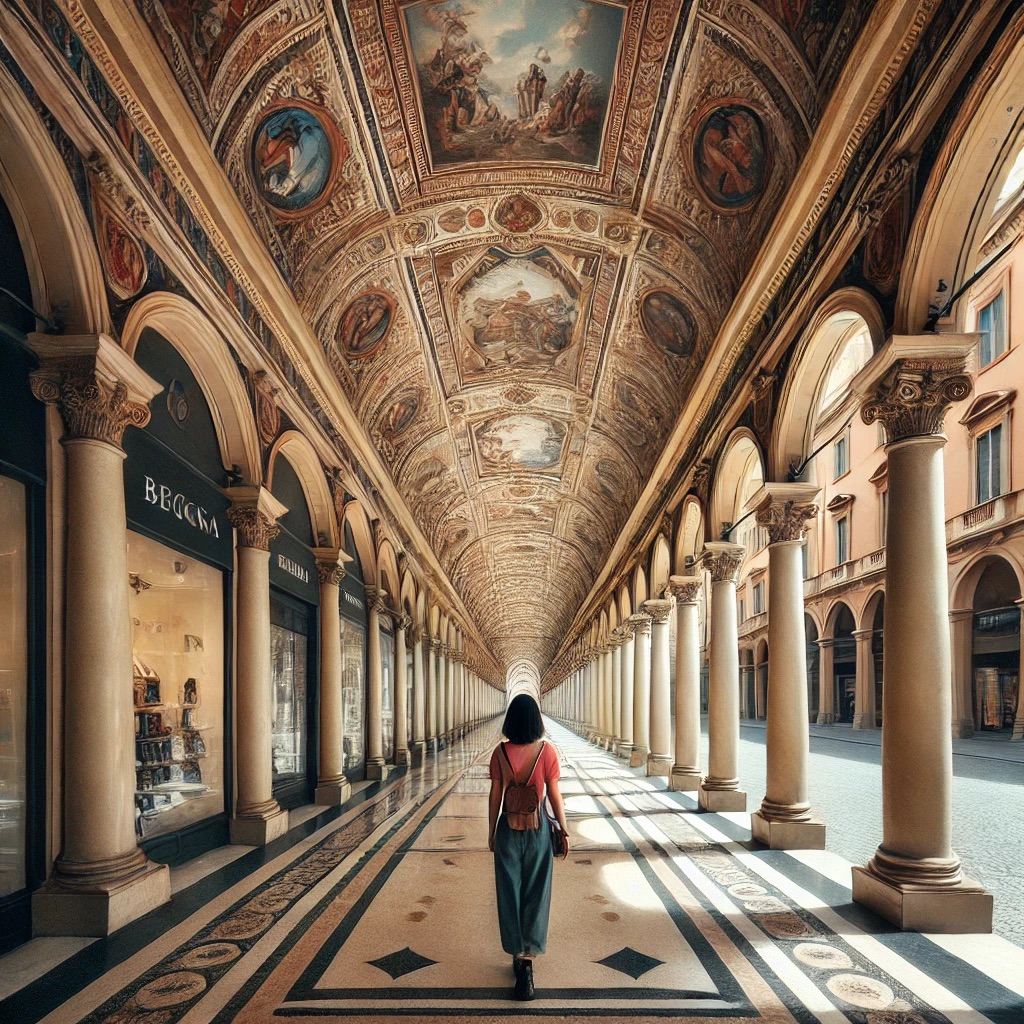ChatGPT:Bologna, located in the Emilia-Romagna region of northern Italy, is one of the country’s most historic and culturally rich cities. Its origins trace back to at least the 6th century BCE, when it was an Etruscan settlement known as Felsina. The city later came under the control of the Romans around 189 BCE, when it was renamed Bononia. Under Roman rule, Bologna became a significant urban center, benefiting from its strategic location on the Via Aemilia, a major Roman road that connected several important cities.
During the Middle Ages, Bologna gained prominence for its university, founded in 1088, which is widely considered the oldest university in continuous operation in the world. The University of Bologna became a center for legal studies, attracting scholars from across Europe. This academic tradition contributed significantly to the city’s development, shaping its intellectual and cultural life.
Bologna played a crucial role in medieval Italy, not just as an academic center but also as a political and economic hub. During the 12th and 13th centuries, Bologna was a prominent commune, often involved in conflicts with neighboring city-states and the Papal States. The city was known for its relatively advanced political institutions, including a city council and a podestà, a chief magistrate.
In the Renaissance, Bologna continued to thrive, becoming a center of art, culture, and learning. The city was home to significant artists like the Carracci family, who played a pivotal role in the development of Baroque art. Additionally, Bologna’s rich architectural heritage, including its famous porticoes and medieval towers, many of which still stand today, developed during this period.
Bologna became part of the Papal States in the 16th century, which brought both stability and challenges. The city retained much of its autonomy and continued to prosper, although it was also affected by the broader conflicts and changes sweeping through Italy, including the Napoleonic Wars and the subsequent unification of Italy in the 19th century.
In modern times, Bologna has maintained its reputation as a center of education, culture, and progressive politics. The city played a key role in the resistance movement during World War II and has since been known for its leftist political traditions. Bologna is also famous for its culinary heritage, particularly its rich pasta dishes like tagliatelle al ragù, known internationally as “Bolognese sauce.”
Today, Bologna is a vibrant city that blends its rich historical legacy with a dynamic modern life. It remains an important cultural center in Italy, known for its art, music, and, of course, its university, which continues to attract students from around the world. The city’s well-preserved medieval architecture, including its iconic towers and extensive network of porticoes, alongside its lively social scene, makes Bologna a unique and attractive destination in Italy.
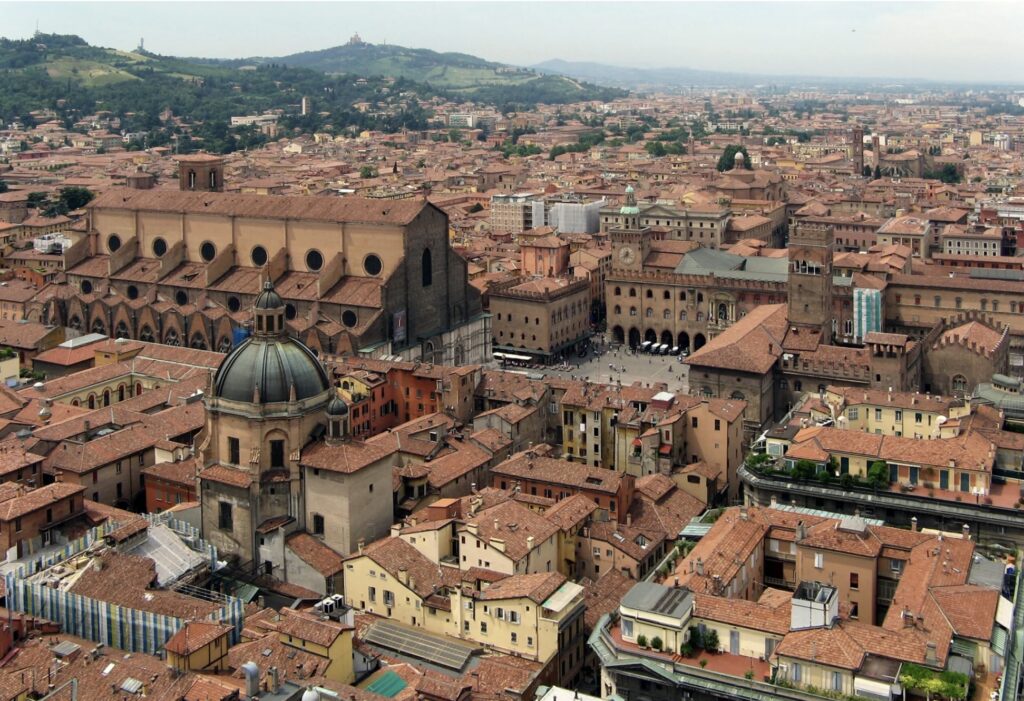
Bologna’s medieval architecture is characterized by its unique blend of practicality, grandeur, and artistic expression, reflecting the city’s wealth and importance during the Middle Ages. Several features make Bologna’s medieval architecture distinct:
1. Towers (Torri)
Bologna was famously known as “La Turrita” (the towered one) during the medieval period, due to the large number of towers that dominated its skyline. At its peak, the city had around 180 towers, though today only about 20 remain. These towers were built by noble families as symbols of power, wealth, and sometimes for defensive purposes. The most famous of these towers are the Asinelli and Garisenda towers, which still stand today in the city center. The Asinelli Tower, standing at 97 meters, is one of the tallest medieval towers in Italy, while the Garisenda is notable for its significant tilt.
2. Porticoes
One of the most iconic features of Bologna’s architecture is its extensive network of porticoes (arcades), which stretch for over 38 kilometers throughout the city. These covered walkways were initially built to provide additional living space by extending upper floors over the street, creating sheltered areas beneath. The porticoes served both practical and social functions, offering protection from the weather and spaces for commercial and social activities. Bologna’s porticoes are unique in their scale and variety, with different styles ranging from simple wooden structures to elaborate stone and brick designs. The Portico di San Luca, leading to the Sanctuary of the Madonna di San Luca, is the longest continuous portico in the world, measuring about 3.8 kilometers.
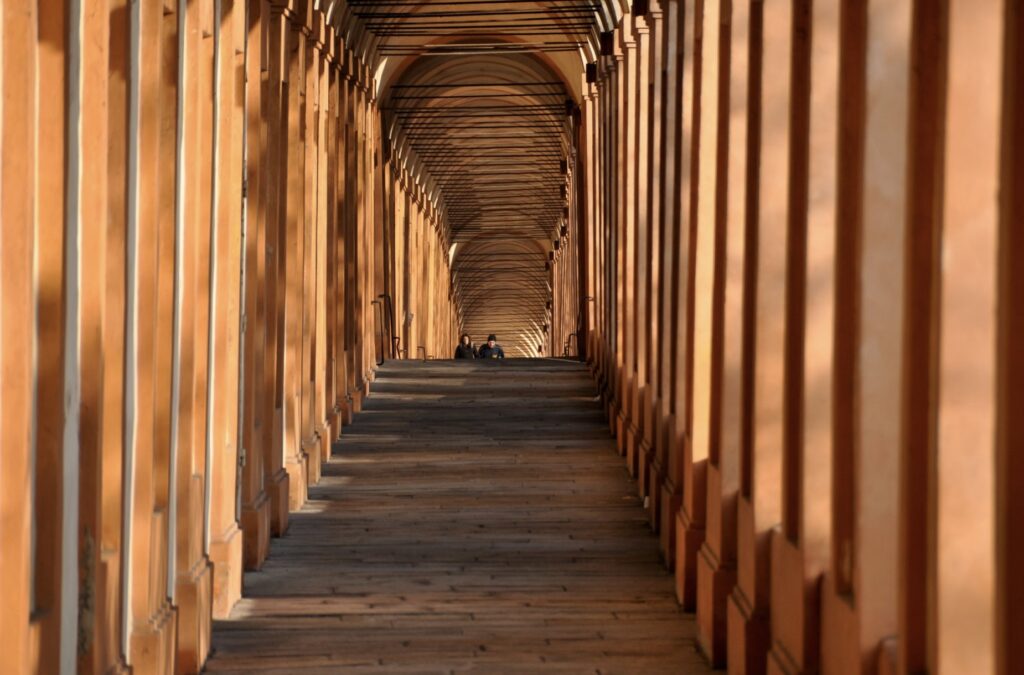
3. Palaces (Palazzi)
Bologna’s medieval palazzi reflect the wealth and influence of the city’s aristocracy and merchant class. These buildings are often characterized by their robust construction, with thick walls and small windows on the lower floors for defense, and more elaborate decorations on the upper floors. Notable examples include the Palazzo del Podestà and Palazzo Re Enzo, both located in the central Piazza Maggiore. The Palazzo del Podestà was the seat of the city government, while Palazzo Re Enzo, named after Enzo of Sardinia, who was imprisoned there, has a richly storied history and is part of the larger complex of civic buildings that dominate the square.
4. Churches and Religious Buildings
Bologna’s medieval religious architecture is equally remarkable, with several churches that blend Romanesque and Gothic elements. San Petronio Basilica, located in Piazza Maggiore, is one of the largest churches in the world and a prime example of Gothic architecture in Italy, although it was never completed according to its original plan. The church’s facade, partially finished in brick and marble, reflects the transitional nature of architectural styles during its construction. Another significant religious complex is Santo Stefano, also known as the “Seven Churches,” a group of interconnected buildings that exemplify a mix of Romanesque, Gothic, and early Christian styles, representing different phases of construction over several centuries.
5. Brickwork
Bologna’s medieval buildings are largely constructed from red brick, which gives the city its distinctive warm, earthy tone. The use of brick was not only practical, due to the availability of local clay, but also became a stylistic choice that unified the city’s architectural appearance. This characteristic brickwork can be seen in everything from grand palaces to modest homes and is often combined with decorative terracotta elements.
6. Urban Layout
The medieval layout of Bologna is still evident in its narrow, winding streets, which were originally designed for defensive purposes and to accommodate the city’s growth within its walls. The historic center is densely packed with buildings, and many of the medieval street patterns have been preserved, giving visitors a sense of the city’s historical depth. The grid-like structure of the city, centered around Piazza Maggiore, reflects both Roman and medieval planning influences.
These architectural features combine to make Bologna a unique repository of medieval architecture, with a strong sense of continuity from its past to its present. The city’s architectural heritage has been remarkably well-preserved, offering a vivid glimpse into the life and aesthetics of medieval Italy.
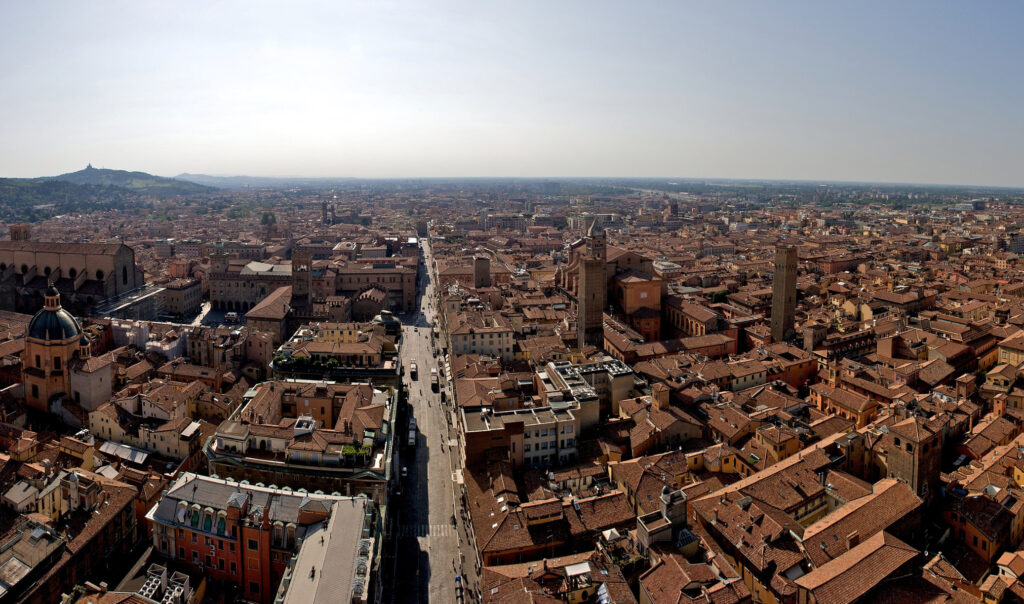
Bologna is rich in historical monuments and tourist attractions, reflecting its long and varied history. Here are some of the most significant sites that visitors to the city often explore:
1. Piazza Maggiore
- The main square of Bologna, surrounded by important buildings like the Basilica of San Petronio, Palazzo d’Accursio, Palazzo del Podestà, and Palazzo Re Enzo. It’s a central hub for both locals and tourists.
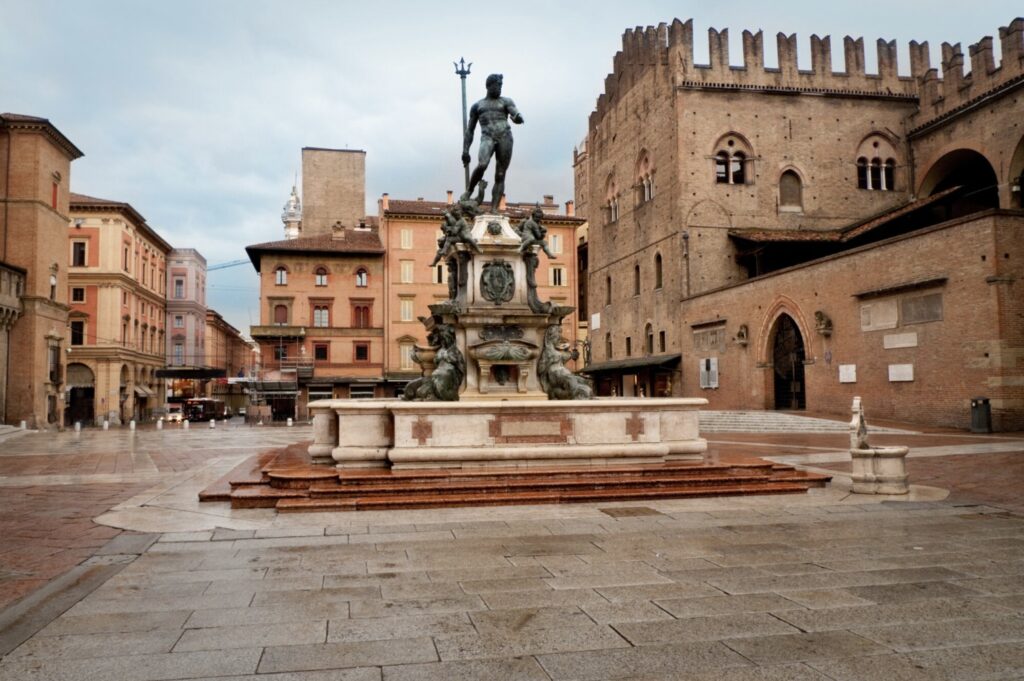
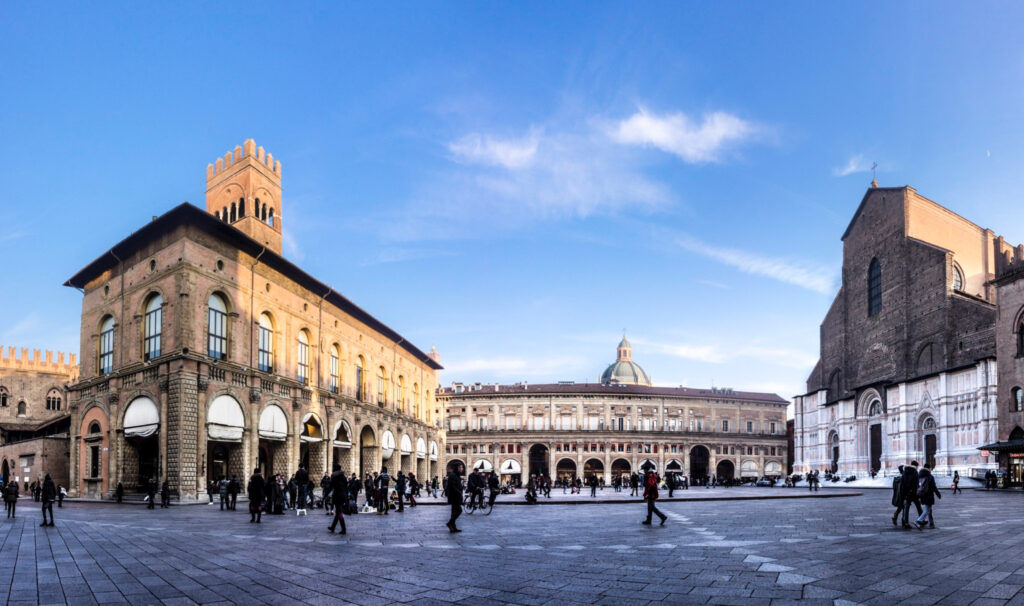
2. Basilica of San Petronio
- One of the largest churches in the world and an iconic example of Gothic architecture. The church’s unfinished facade is a striking feature, and inside, it houses important artworks and a famous meridian line.
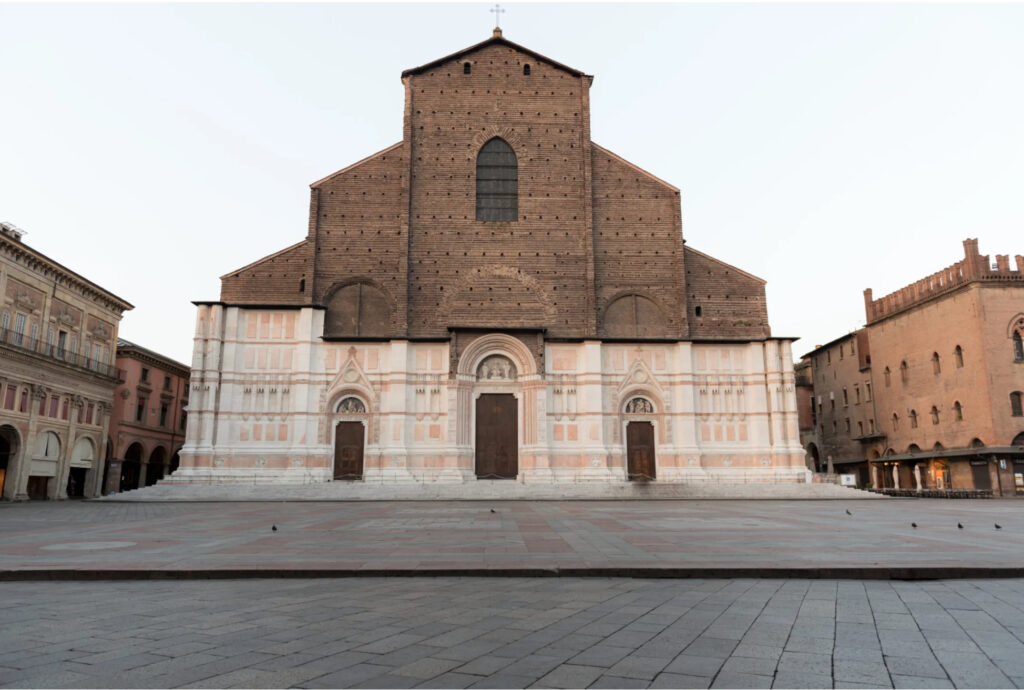
3. The Two Towers (Le Due Torri)
- The Asinelli and Garisenda towers are the most famous of Bologna’s medieval towers. The Asinelli Tower is open to visitors who can climb its 498 steps for a panoramic view of the city, while the Garisenda is notable for its tilt.
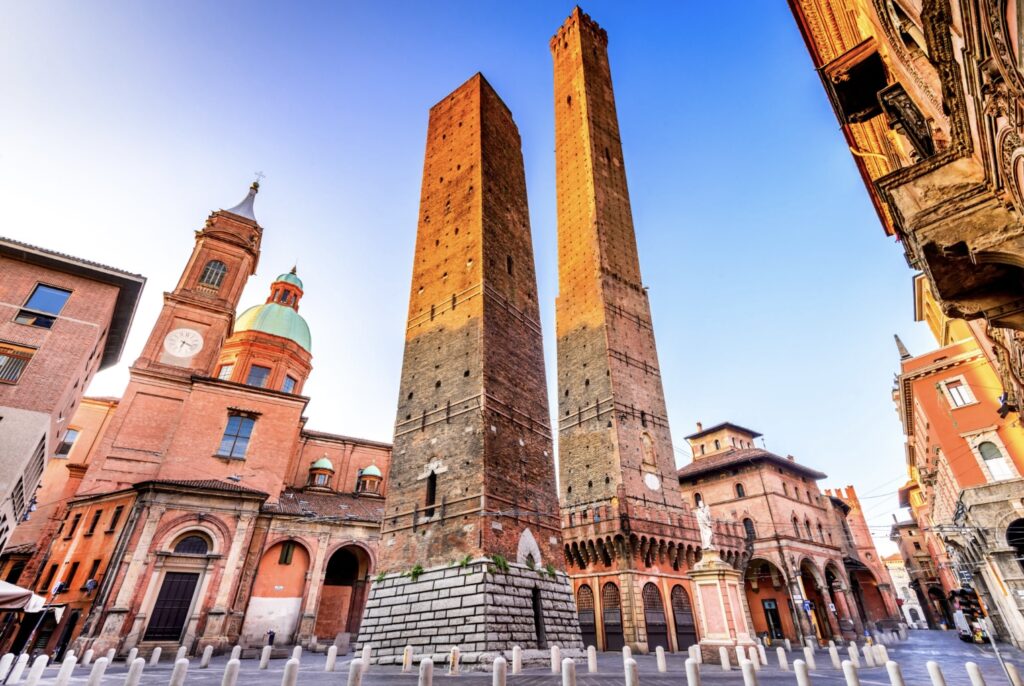
4. Santo Stefano (The Seven Churches)
- A complex of religious buildings, also known as the “Seven Churches,” which includes several interconnected structures built over different periods, reflecting various architectural styles.
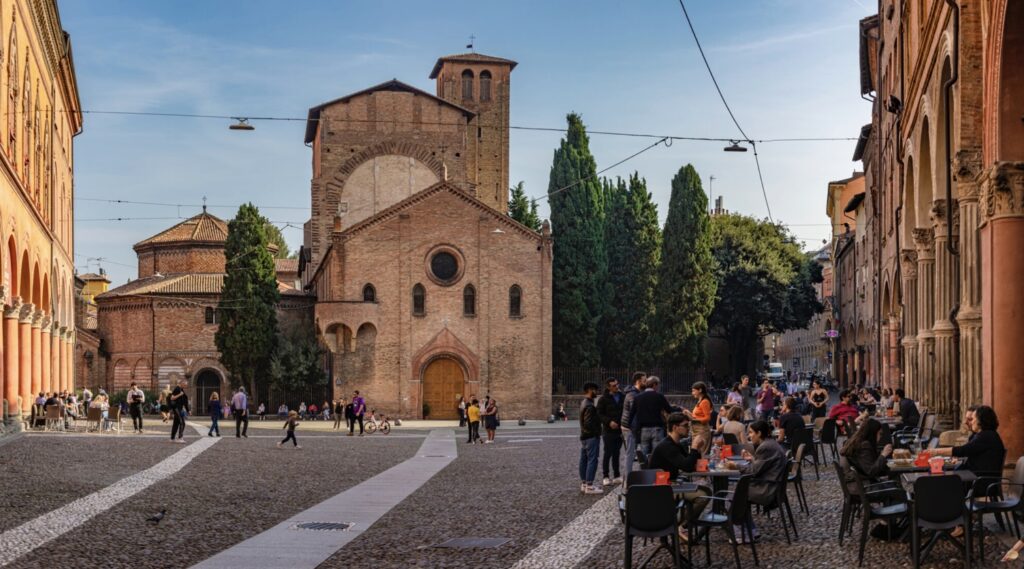
5. Archiginnasio of Bologna
- Originally the main building of the University of Bologna, this historical site now houses the Archiginnasio Municipal Library. It’s known for its stunning interior, including the Anatomical Theatre, a wooden amphitheater where anatomy lessons were held.
6. Basilica of San Domenico
- This church is notable for its beautiful interior, including the Arca di San Domenico, a marble tomb that contains the remains of Saint Dominic, founder of the Dominican Order. The tomb is adorned with sculptures by Nicola Pisano and Michelangelo.
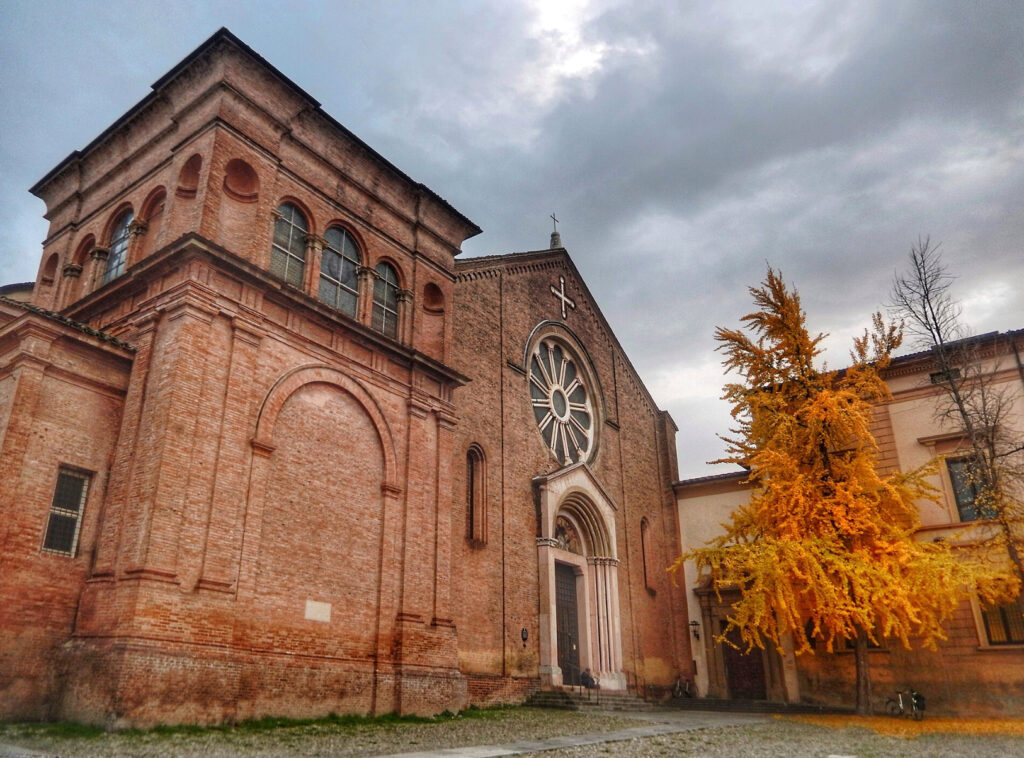
7. Palazzo dell’Archiginnasio
- A significant Renaissance building, once part of the University of Bologna. It features the Teatro Anatomico, an ancient anatomy theater used for dissections, and a library filled with historic manuscripts.
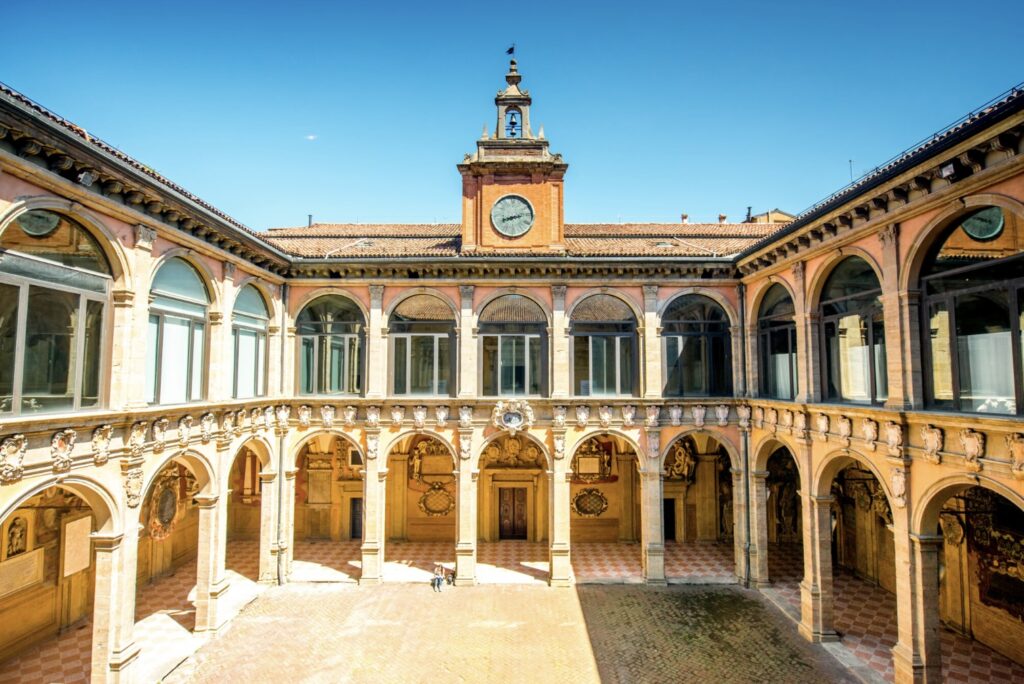
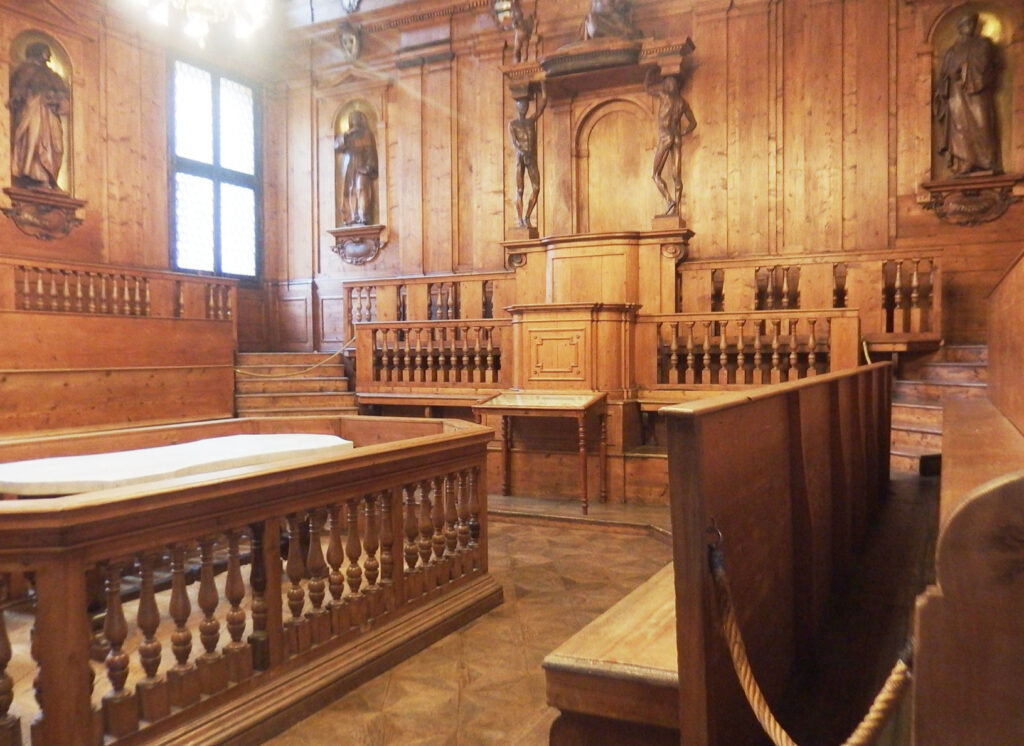
8. Palazzo Comunale (Palazzo d’Accursio)
- Located on Piazza Maggiore, this historic building has served as Bologna’s city hall for centuries. It houses the Civic Art Collection and the famous clock tower.
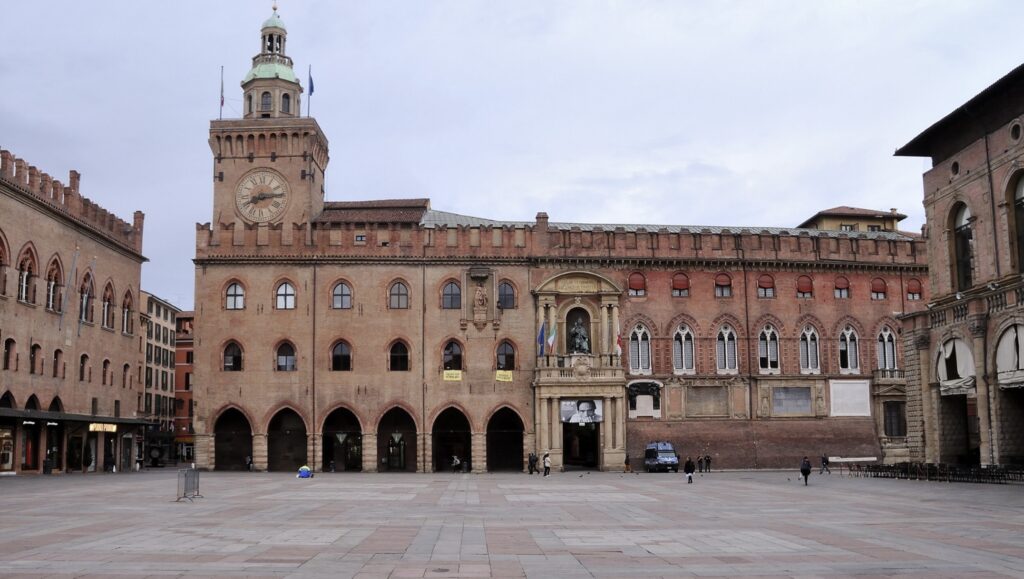
9. Museo Civico Archeologico
- An important archaeological museum with extensive collections from the Etruscan, Roman, and Egyptian periods, providing insights into the ancient history of Bologna and the surrounding region
10. Museo di Palazzo Poggi
- Part of the University of Bologna, this museum showcases a wide range of collections, including art, science, and military exhibits, housed in a beautiful 16th-century palace.
11. Sanctuary of the Madonna di San Luca
- A basilica located on a hill overlooking Bologna. It is accessible via the famous Portico di San Luca, the longest continuous portico in the world. The sanctuary offers stunning views of the city and surrounding countryside.
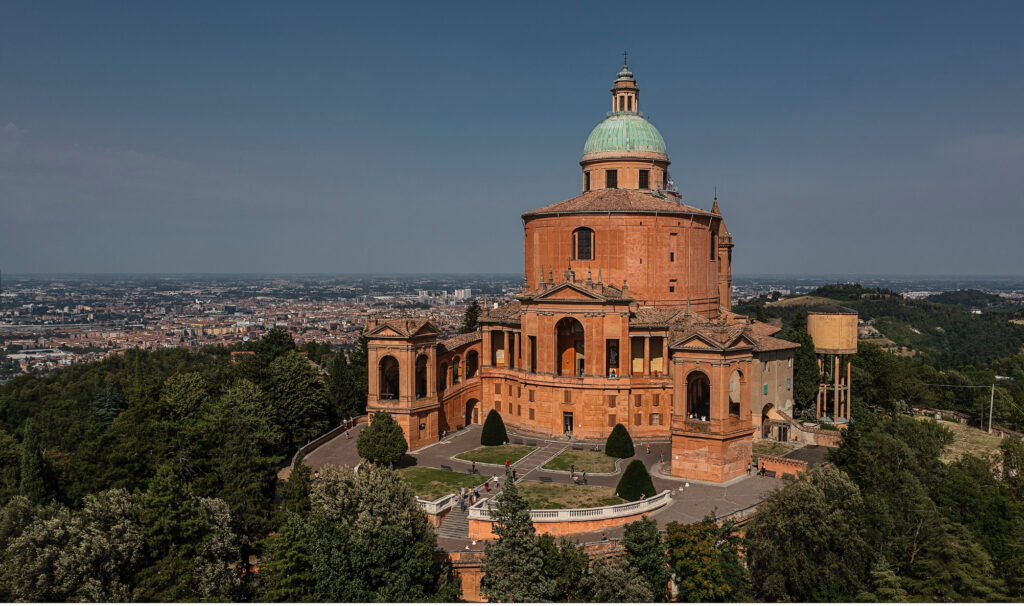
12. Porticoes of Bologna
- The city’s extensive network of porticoes is a UNESCO World Heritage site, offering visitors the chance to walk along these historic arcades, which cover much of the city center.
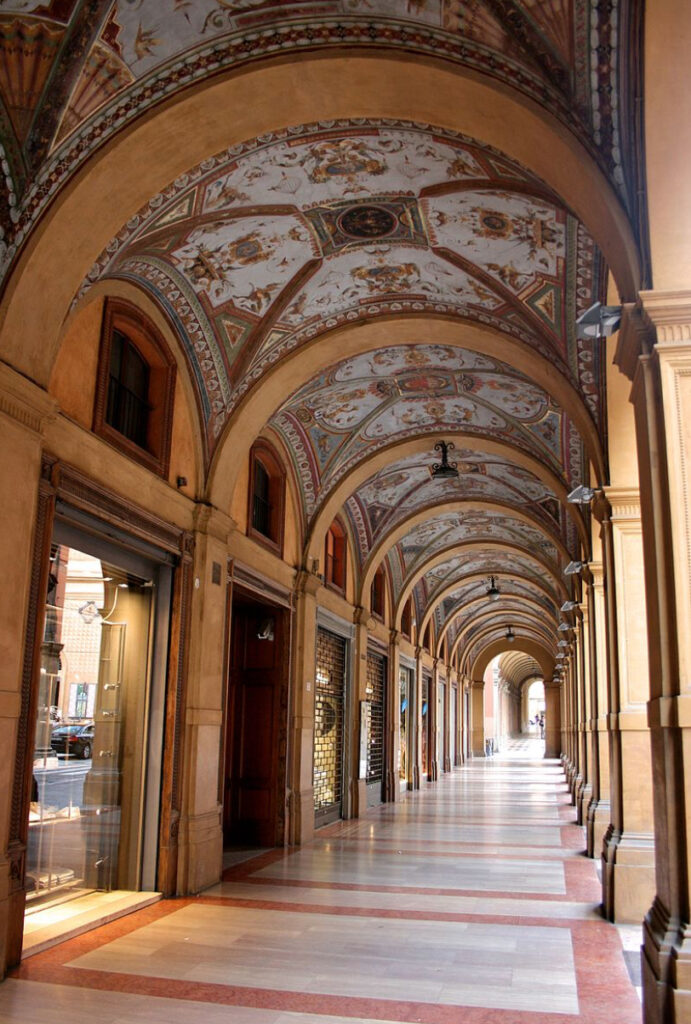
13. Pinacoteca Nazionale di Bologna
- The National Art Gallery of Bologna houses an impressive collection of works by Bolognese and other Italian artists, including pieces by Raphael, Guido Reni, and the Carracci family.
14. Oratory of Santa Cecilia
- A hidden gem in Bologna, this small church is known for its magnificent frescoes that depict the life of Saint Cecilia, painted by early Renaissance artists.
15. Certosa di Bologna
- A large historical cemetery with monumental tombs, statues, and chapels, reflecting Bologna’s artistic and cultural history. It’s a peaceful place that offers a glimpse into the city’s past.
16. Museum of Modern Art of Bologna (MAMbo)
- A contemporary art museum that showcases modern and contemporary artworks, hosting temporary exhibitions and events, making it a cultural hub for art lovers.
17. Montagnola Park
- One of Bologna’s oldest parks, offering a green space in the heart of the city with historical monuments, sculptures, and walking paths.
These monuments and attractions reflect Bologna’s rich history and cultural diversity, making it a fascinating destination for those interested in art, history, and architecture.
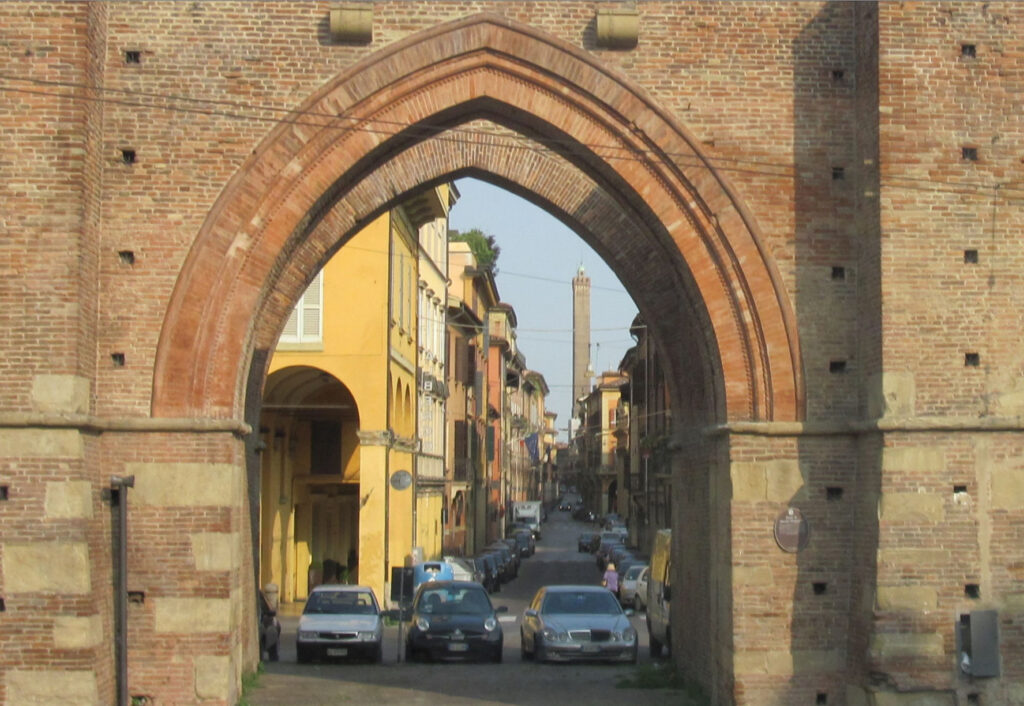
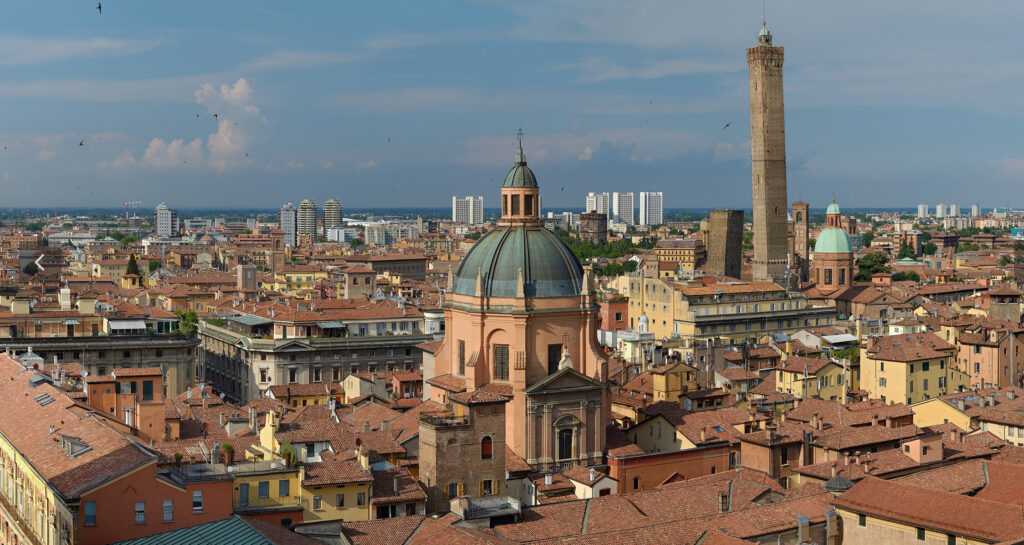
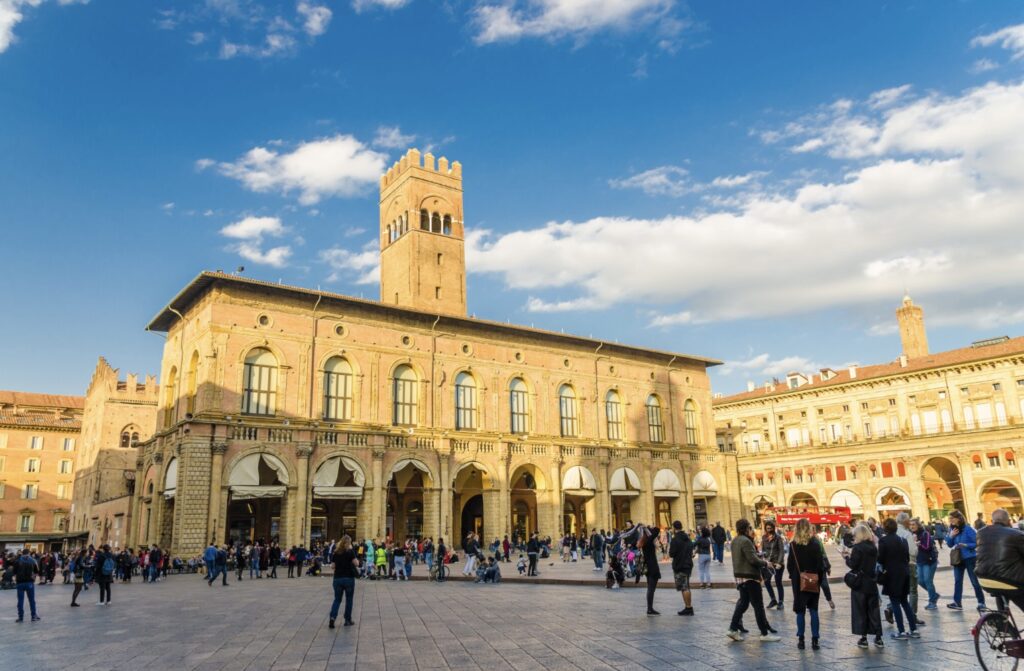
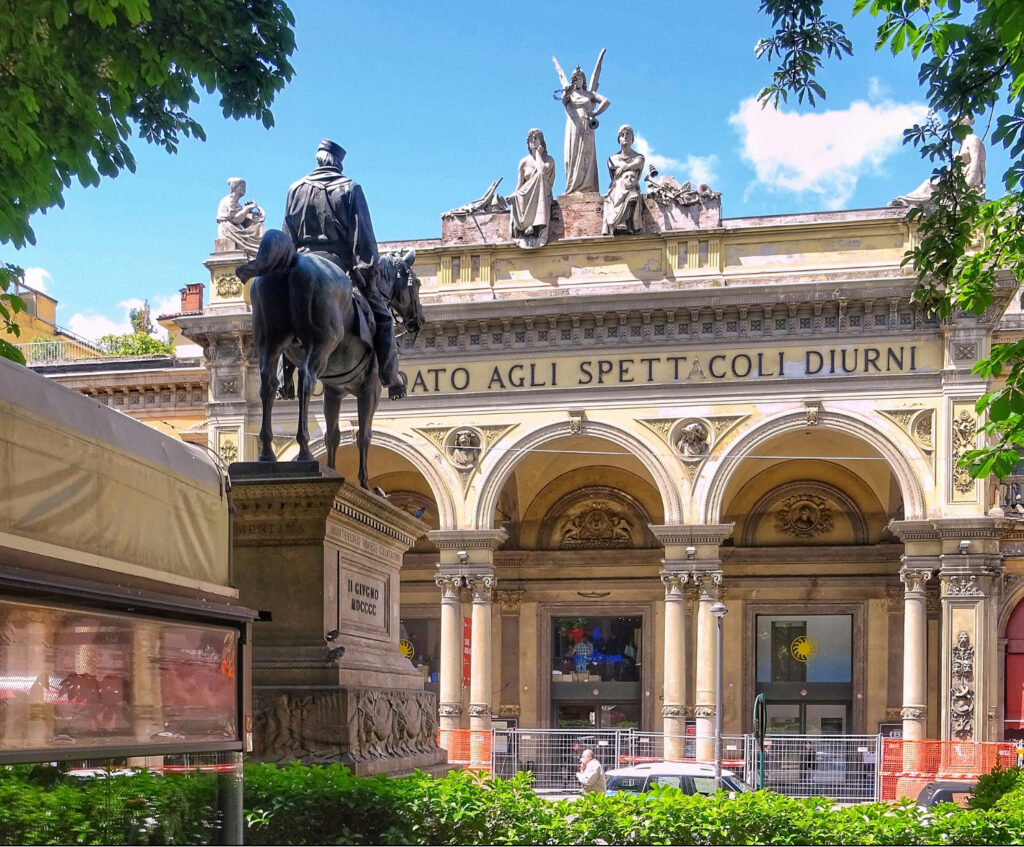
Bologna is renowned for its rich culinary tradition, often considered the gastronomic capital of Italy. Here are some of the most famous food specialties from Bologna:
1. Tagliatelle al Ragù
- Perhaps the most iconic dish of Bologna, this consists of fresh egg pasta (tagliatelle) served with a rich, slow-cooked meat sauce known internationally as “Bolognese sauce.” However, in Bologna, it’s simply called ragù and is traditionally made with a mixture of beef and pork, vegetables, tomatoes, and wine.
2. Tortellini
- Small, ring-shaped pasta filled with a mixture of meat (often pork loin, prosciutto, and mortadella), cheese, and sometimes nutmeg. Tortellini are typically served in a rich broth (brodo) or with cream sauce.
3. Mortadella
- A famous Bolognese cold cut made from finely ground pork, flavored with spices and often studded with small cubes of fat. Mortadella is enjoyed as a standalone snack, in sandwiches, or as part of an antipasto platter.
4. Lasagne alla Bolognese
- A traditional version of lasagna made with layers of fresh pasta sheets, ragù, béchamel sauce, and Parmigiano-Reggiano cheese. It’s a hearty and comforting dish that showcases Bologna’s love for rich, flavorful food.
5. Gramigna alla Salsiccia
- A typical Bolognese pasta dish made with gramigna, a short, curled pasta, served with a sausage-based sauce. The sauce is often made with a combination of fresh sausage, cream, and sometimes tomatoes.
6. Crescentine (or Tigelle)
- A type of flatbread typical of the Bologna area, often served warm and filled with a variety of ingredients such as cured meats, cheeses, or pesto. Crescentine are traditionally cooked in a special cast-iron mold.
7. Cotoletta alla Bolognese
- A breaded and fried veal or pork cutlet, similar to a schnitzel, but typically topped with prosciutto and Parmigiano-Reggiano, then finished with a reduction of broth, giving it a rich flavor.
8. Friggione
- A traditional Bolognese dish made from slow-cooked onions and tomatoes, often used as a side dish or as a topping for bread or polenta.
9. Balanzoni
- A type of green pasta, similar to tortellini, made with spinach and stuffed with a mixture of ricotta cheese, mortadella, and Parmigiano-Reggiano. They are often served with a butter and sage sauce.
10. Piadina
- While more commonly associated with the nearby region of Romagna, piadina is also popular in Bologna. It’s a type of flatbread that’s typically filled with various meats, cheeses, and vegetables.
11. Zuppa Inglese
- A traditional dessert that resembles a trifle, made with layers of sponge cake soaked in liqueur (usually Alchermes), custard, and chocolate cream. Despite its name, it’s a distinctly Italian dessert with roots in Bologna.
12. Torta di Riso
- A traditional Bolognese dessert, this is a sweet rice cake flavored with almonds, candied fruit, and sometimes liqueur. It’s dense, rich, and often enjoyed during special occasions.
13. Salame Rosa
- A lesser-known Bolognese specialty, Salame Rosa is a type of cured meat similar to mortadella but with a coarser texture and a unique, delicate flavor. It’s often served sliced thin as part of an antipasto platter.
These specialties are central to Bologna’s culinary identity, reflecting the city’s emphasis on quality ingredients, traditional cooking methods, and rich, comforting flavors.
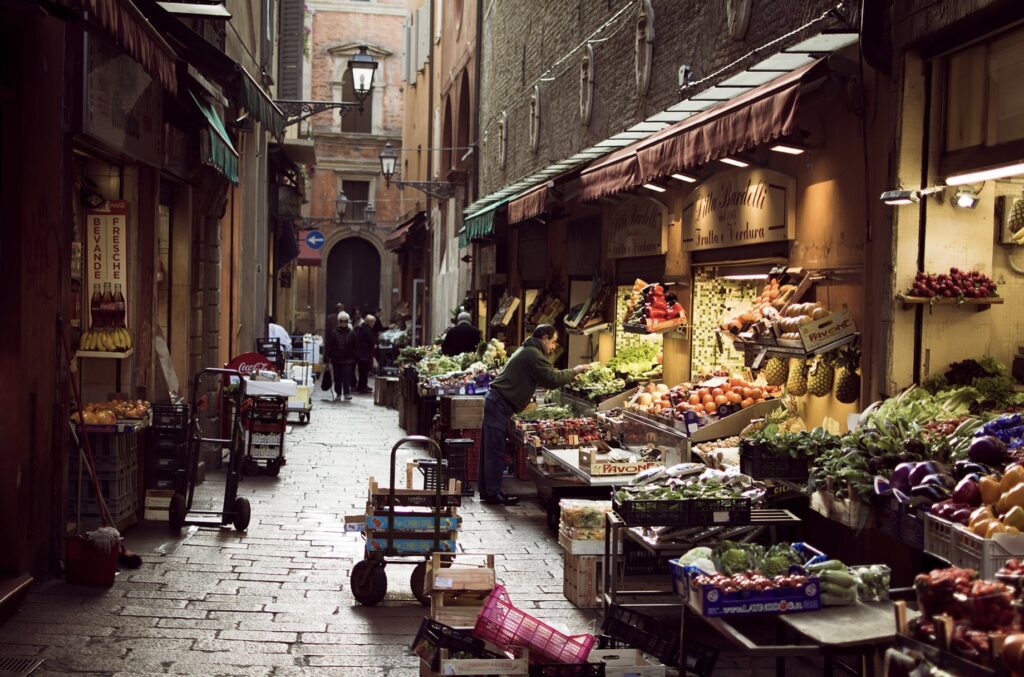
Here’s a suggested two-day itinerary for visiting Bologna, along with a recommendation for a luxurious accommodation that offers unique features and incorporates the local food scene.
Day 1: Historical and Cultural Exploration
Morning:
- Piazza Maggiore & Basilica of San Petronio: Start your day at the heart of Bologna in Piazza Maggiore. Explore the Basilica of San Petronio, one of the largest churches in the world, and admire its Gothic architecture and impressive interior.
- Palazzo d’Accursio: Visit this historical building, which houses the Civic Art Collection and offers beautiful views of the square.
Late Morning:
- The Two Towers (Le Due Torri): Climb the Asinelli Tower for a panoramic view of the city. It’s 498 steps to the top, but the breathtaking view is worth it.
- Santo Stefano (The Seven Churches): Walk to this nearby complex of interconnected churches that date back to the 5th century. The tranquil courtyard and ancient chapels offer a peaceful contrast to the bustling city.
Lunch:
- Osteria dell’Orsa: Enjoy a traditional Bolognese lunch at this local favorite. Try tagliatelle al ragù or tortellini in brodo for an authentic experience.
Afternoon:
- Archiginnasio of Bologna: Visit the former main building of the University of Bologna, where you can see the famous Anatomical Theatre and the stunning library filled with ancient books and manuscripts.
- Pinacoteca Nazionale di Bologna: Explore this art gallery, which houses a rich collection of Renaissance and Baroque art, including works by Raphael and the Carracci family.
Evening:
- Aperitivo at Tamburini: Experience the local tradition of aperitivo at Tamburini, a historic delicatessen. Enjoy a selection of cured meats, cheeses, and local wines in a lively atmosphere.
Dinner:
- Ristorante I Carracci: Dine in style at this luxurious restaurant located within the Grand Hotel Majestic. The restaurant is named after the Carracci brothers, whose frescoes adorn the walls, creating an opulent dining environment. Indulge in refined Bolognese cuisine with a modern twist.
Day 2: Food, Shopping, and Scenic Views
Morning:
- Mercato di Mezzo & Quadrilatero District: Start your day exploring the Mercato di Mezzo, an indoor market where you can sample local delicacies. Then, wander through the Quadrilatero district, a maze of narrow streets filled with traditional food shops, artisanal stores, and cafes.
- Visit to a Local Pasta Workshop: Take a guided tour or a short class at a local pasta workshop, where you can learn how to make traditional Bolognese pasta like tortellini or tagliatelle.
Lunch:
- Trattoria Anna Maria: Enjoy a traditional lunch at this renowned trattoria, famous for its authentic Bolognese dishes made from recipes passed down through generations.
Afternoon:
- Sanctuary of the Madonna di San Luca: After lunch, take a walk or a short drive to the Sanctuary of the Madonna di San Luca, perched on a hill overlooking Bologna. If you’re up for it, you can walk up the 3.8-kilometer-long Portico di San Luca, the world’s longest portico, leading to the sanctuary.
- Montagnola Park: On your way back to the city center, take a stroll through this historic park, one of the oldest in Bologna, offering a relaxing atmosphere with sculptures, fountains, and shaded paths.
Evening:
- Dinner at Trattoria da Gianni: End your culinary journey with a dinner at this cozy trattoria, known for its warm atmosphere and traditional dishes like gramigna alla salsiccia.
Accommodation: Grand Hotel Majestic “Già Baglioni”
Location: Via dell’Indipendenza, 8, Bologna
Unique Features:
- Historical Significance: The Grand Hotel Majestic is the oldest and most prestigious hotel in Bologna, located in a beautiful 18th-century palazzo. The building itself is a work of art, with interiors featuring original frescoes by the Carracci brothers.
- Luxurious Rooms: The hotel offers elegantly furnished rooms and suites, combining classical style with modern comforts. Some suites offer views over the city’s historic center.
- Art and History: The hotel’s restaurant, I Carracci, is a destination in itself, with walls adorned with magnificent frescoes. The hotel also features a private art gallery and is located near many of Bologna’s major attractions.
- Gastronomic Experience: The hotel offers a unique culinary experience with its refined Bolognese cuisine at I Carracci and a wine cellar offering a wide selection of fine wines. You can also indulge in a traditional afternoon tea in the stylish café or enjoy an aperitivo at the bar.
This itinerary allows you to explore Bologna’s rich history, culture, and culinary scene, all while staying in luxurious and uniquely Bolognese accommodations.
